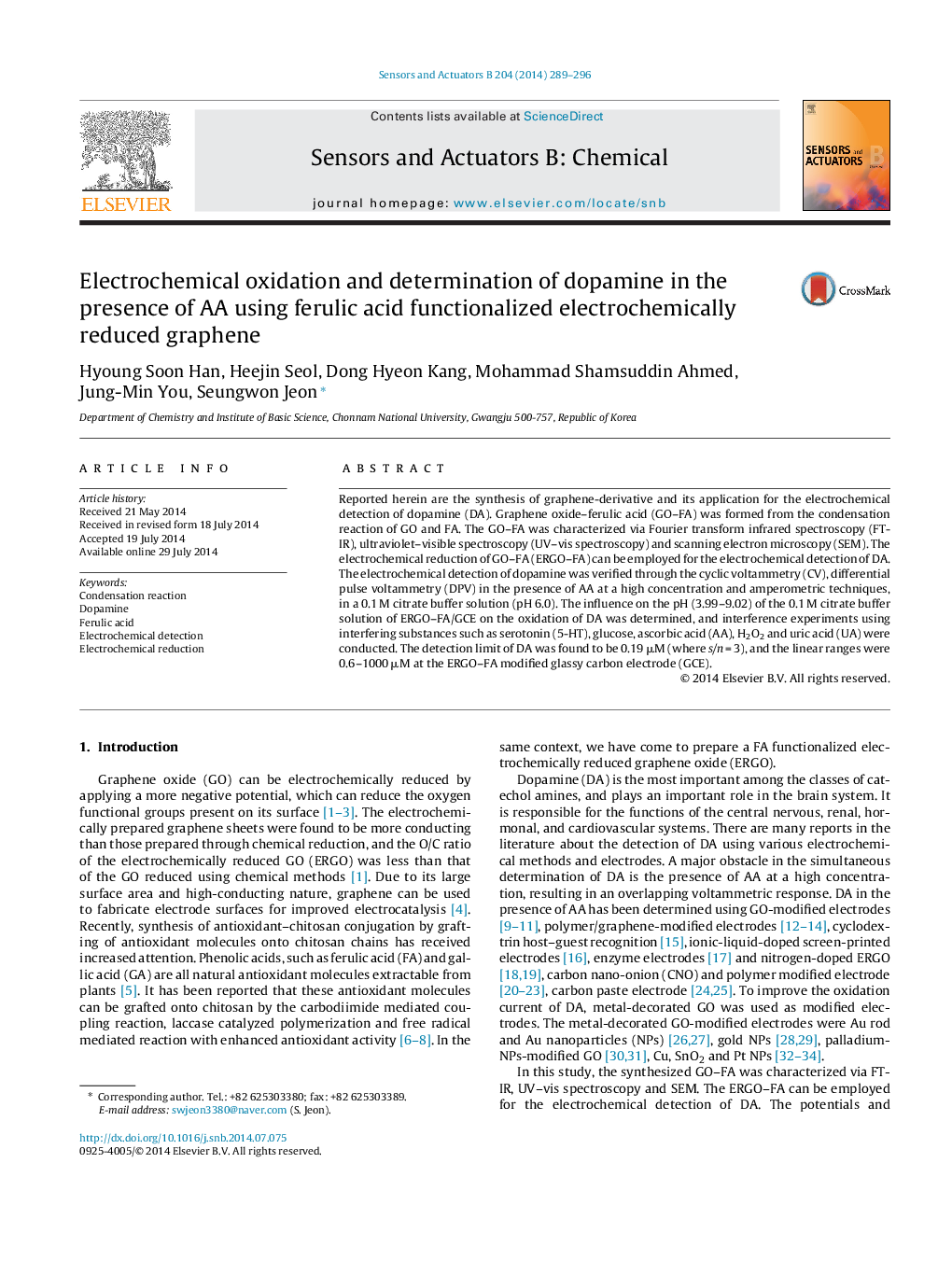| Article ID | Journal | Published Year | Pages | File Type |
|---|---|---|---|---|
| 741980 | Sensors and Actuators B: Chemical | 2014 | 8 Pages |
•Graphene oxide–ferulic acid (GO–FA) reacted the condensation reaction of GO and FA.•The ERGO–FA/GCE was measured oxidation of DA in citrate buffer solution (pH 6.0).•The ERGO–FA/GCE was shown excellent stability, reproducibility and high selectivity.
Reported herein are the synthesis of graphene-derivative and its application for the electrochemical detection of dopamine (DA). Graphene oxide–ferulic acid (GO–FA) was formed from the condensation reaction of GO and FA. The GO–FA was characterized via Fourier transform infrared spectroscopy (FT-IR), ultraviolet–visible spectroscopy (UV–vis spectroscopy) and scanning electron microscopy (SEM). The electrochemical reduction of GO–FA (ERGO–FA) can be employed for the electrochemical detection of DA. The electrochemical detection of dopamine was verified through the cyclic voltammetry (CV), differential pulse voltammetry (DPV) in the presence of AA at a high concentration and amperometric techniques, in a 0.1 M citrate buffer solution (pH 6.0). The influence on the pH (3.99–9.02) of the 0.1 M citrate buffer solution of ERGO–FA/GCE on the oxidation of DA was determined, and interference experiments using interfering substances such as serotonin (5-HT), glucose, ascorbic acid (AA), H2O2 and uric acid (UA) were conducted. The detection limit of DA was found to be 0.19 μM (where s/n = 3), and the linear ranges were 0.6–1000 μM at the ERGO–FA modified glassy carbon electrode (GCE).
